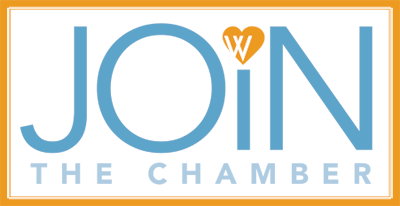by Darnell Dunn, Director of Business Recruitment, Worcester Regional Chamber of Commerce
With key employers such as AbbVie, Bristol Myers Squibb, uBriGene, WuXi Biologics, and the more than 30 start-ups that call local life science incubator MBI home, Worcester is an emerging life science and biomanufacturing cluster. In their 2022 Life Sciences Research Talent 2022, leading commercial real estate services and investment firm CBRE ranked Worcester as the 15th best life sciences market for research talent. Despite the challenges of managing inflation, a higher interest rate environment, and limited access to funding to a sector that served as one of the principal drivers of economic growth during the pandemic, the life science labor force in central mass has continued an upward trajectory. Worcester County’s life science work force expanded by more than 800 jobs over 2021-2023 representing growth in employment of 14%. Some of that employment growth has been driven by Leal Therapeutics, a Worcester-based life sciences company which recently secured its latest round of funding to the tune of $45 million dollars.
Launched in 2021, Leal’s October funding comes after $39 million in seed round in 2022. The proceeds will support the firm’s plan to submit investigational drug applications to the U.S. Food and Drug Administration (FDA) for its treatments for central nervous conditions schizophrenia, and ALS, more commonly known as “Lou Gehrig’s disease”. According to a company press release from Wednesday October 30th, the company expects to submit its application at the end of the year with the intention of beginning clinical trials in early 2025. Founder and CEO of Leal Dr. Asa Abeliovich is no stranger to these kinds of milestones. Abeliovich had previously launched New York-based gene therapies company Prevail Therapeutics, acquired by Eli Lilly and Co. in 2020, and the California-based biopharma company Alector that began trading on the Nasdaq in 2019.
The process of developing, approving, and commercializing new drugs is a long, arduous, and costly process fraught with risk. The few drugs that prove safe and commercially viable to generate sufficient revenue to fund salaries, debt obligations, working capital needs, non-cancellable operating leases, and other Research and Development cost. Patents, intellectual property expectations and expectations around the addressable market play are key factors in funding and partnership opportunities available to early-stage, small and even medium sized companies. Although large, publicly traded companies have more tools at their disposal to mitigate risk, similar dynamics apply.
In early September, Cambridge based Alnylam Pharmaceuticals, a pioneer in RNA interference (RNAi)-based medicines, announced detailed results of a phase-3 study on a heart disease drug in development. Already approved to treat a rare disease brought on by mutations in the gene encoding transthyretin (TTR) that can lead to dysfunction of different organs and tissues, Alnylam seeks to expand the use of the same treatment (Vutrisiran) to help reduce mortality and recurrent events resulting from Cardiomyopathy, a disease of the heart muscle that makes it harder for the heart to pump blood to the rest of the body. Although patients showed improvement, their results were not significantly different from current available therapeutics. In response to the findings, Alnylam’s stock fell nearly 10%. Global pharmaceutical company AstraZeneca recently fell short with a new form of cancer treatment known as “antibody-drug conjugate back in September. After failing to reach its target of overall survival benefits for patients with non-small-cell lung cancer and performing a trial that failed to help patients live longer than standard chemotherapy who had previously undergone hormonal therapy, Jefferies & Co Pharma & Biotech Research Analyst Peter Welford said the trail result “further dents belief” in Dato-DXd and “complicates regulatory discussions for approval”. Both instances saw the stock fall 1.6% and 5% respectively.
At the heart of the investment thesis of the companies are their intellectual property and the corresponding cash flows the exclusive distribution rights a successful treatment are sure to accrue when all goes according to plan. As companies grow in market capitalization, companies are better positioned to limit the impact of any one drug or treatment on their earnings, but the fundamental risk is very present. Some of the biggest risks life sciences companies can face are outside the lab. Back in June, President and CEO of Danish drug maker Lars Fruergaard Jørgensen Novo Nordisk testified in front of the Senate committee on health, education, labor and pensions at the behest of its chair and Vermont Senator Bernie Sanders who opened an investigation on the firm’s pricing practices of popular drugs Ozempic and Wegovy.
During the hearing, Sanders said his recent conversations with generic drugmakers revealed that Novo Nordisk’s pricing is “nothing less than excess corporate greed.” He went on to say, “They have studied the math, and they tell me that they can sell a generic version of Ozempic, the exact same drug that Novo Nordisk is manufacturing, to Americans for less than $100 a month,” Sanders said. “Less than 10% of what Americans are currently paying.” Because Nordisk holds an exclusive patent, other companies are barred from producing the drug for up to ten years. If it were the sole decision of the senator, his comments suggest he might revoke the exclusivity of an instrument like a patent offers. The constant drive to beat competitors to market with new treatments there are far more failures than success. Those successes must pay for the cost of the failure and deliver a profit, some of which will inevitably be reinvested to keep the machine going. As the sector continues to grow and mature, it’s critical that the regulatory environment continues to support the innovator as their ability to command the assets needed to fund discoveries are underpinned by the promise of sharing in the revenue generated by the treatments and techniques they may help discover, create and/or commercialize.






